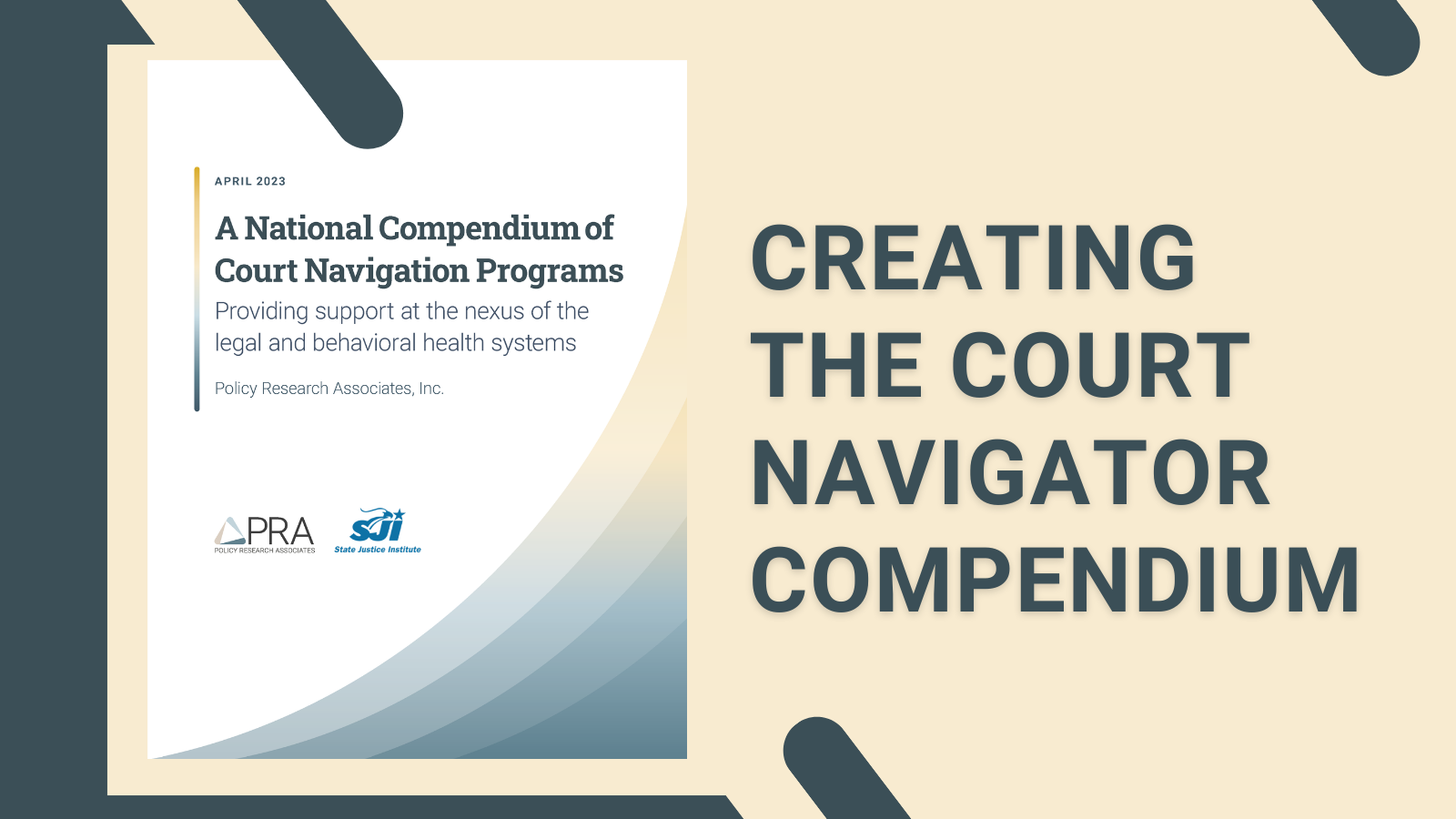The Background
People with open court cases can find it difficult to navigate complicated legal processes and may experience a range of behavioral health and social needs that can only be addressed in the community. Failure to address behavioral health and social needs can lead to further entanglement in the criminal-legal system, unfavorable legal outcomes in criminal and civil courts, and disconnection from essential support services. As courts across the United States work to increase access to behavioral health services, they increasingly turn to innovative, person-focused solutions. One such solution is court navigator programs. Court navigator programs connect people to resources in the community, effectively guide people through the legal process, and reduce their likelihood of recidivism. Court navigator programs may lead to quicker case outcomes, improved personal outcomes, and less strain on court systems.
Currently, court navigator programs are developed locally because there are no national creation or implementation guidelines. As a result, knowledge about programs, especially those that focus on connecting people to community-based, behavioral health services, is not widespread. To learn more, we conducted a national scan of court navigator programs. This post provides a brief overview of the programs we found.
The National Scan
Our goal was to learn what court navigator programs exist, how they are structured, and what services they provide. We searched for programs using six inclusion criteria:
- Programs must be provided in a courthouse or courthouse-affiliated location.
- Programs must include connection to community-based services.
- Programs must serve people with open court cases.
- Programs must provide services “person to person.”
- Programs must be voluntary.
- Programs must be in the United States and offered through a state court.
As we identified programs, we assessed whether they met our inclusion criteria through email and phone conversations. We sent a detailed survey to learn more about programs that met our criteria. The survey asked about the program’s structure, funding sources, services provided, history, and development, among other topics.
The Court Navigator Programs
We found 18 programs that are located across 21 different states. These programs are diverse in terms of geographic location, structure, and services provided. About half of the programs are in urban settings with the rest divided across suburban, rural, and mixed settings. Just over half of programs operate in a single jurisdiction, five operate in multiple jurisdictions, two operate statewide, and one operates nationally. Programs are funded through a range of sources, including local governments, grants, and philanthropic donations.
All programs had to provide services to people with open court cases. Many programs also provide services to individuals across the continuum of contact with the legal system and even to individuals who are not currently experiencing contact with the legal system. Nine programs provide services to the public, 14 continue providing services after an individual’s case is closed, 11 provide services to family members of the court-involved person, and 6 provide services to victims.
The primary intent of court navigation programs is to aid people with their court involvement and to connect people with services in the community. Court navigators provide some aid directly. In most programs, court navigators assist people in finding their way around the courthouse and answer basic questions about the court process. Some navigators help people locate and organize necessary legal paperwork or attend court hearings with a person and discuss the hearing afterward. Finally, some navigators complete mental health and substance use screens with people and even provide short-term crisis counseling.
Court navigators also refer people to services in the community. Across programs, court navigators refer people to services that can meet needs ranging from mental health and substance use treatment to food and shelter to help enroll in benefits (e.g., Supplemental Security Income [SSI], Social Security Disability Insurance [SSDI], SNAP, etc.). Generally, court navigators emphasize referring people to services via a ‘warm handoff’ so that people can be connected to long-term care in the community. Typically, services are offered at one point in time, and the navigators do not have further, additional contact with an individual. In a few programs, navigators engage in brief follow-up calls to ensure that people have successfully connected with services.
For additional information about programs, please see The National Compendium of Court Navigation Programs.
The Next Steps
We are continuing to learn more about court navigator programs through our work funded by the State Justice Institute. This year, we are interviewing people involved with court navigator programs and learning more through site visits. We will also create an updated edition of the compendium as jurisdictions develop new court navigator programs. If you are employed by a program that you believe meets the inclusion criteria described above, please fill out this survey to let us know about your program.


